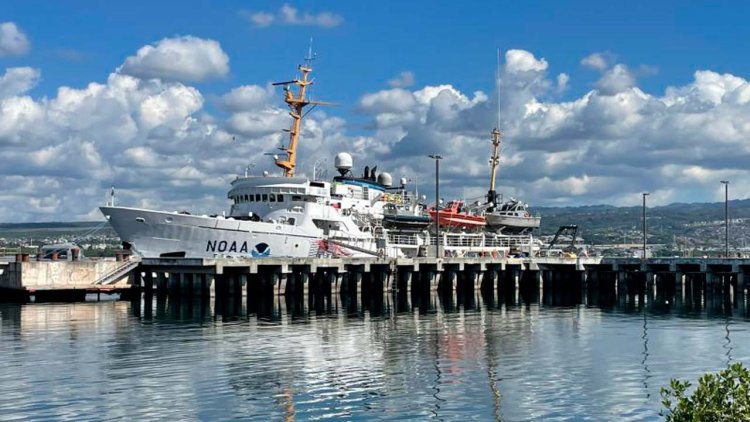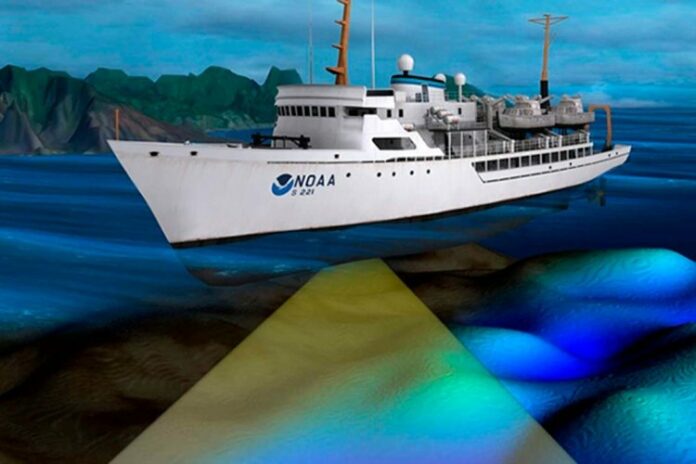The NOAA Ship Rainier departs Honolulu on a mission to measure water depths and gather information on corals, fish, and changing ocean conditions.
Scientists and managers depend on research surveys to monitor coral reef ecosystems across the Mariana Archipelago. Multiple threats including climate change, disease, and land-based sources of pollution impact coral reefs around the globe, including the Marianas.
During expeditions this spring and summer, scientific divers from NOAA will estimate the number of reef fish and measure corals around the islands. They will also collect thousands of photographs to create 3D images of the reefs. The abundance and distribution of reef fish and coral reef organisms show us the conditions and integrity of our coral reef ecosystems. Over time, we can see how they have changed—an important part of conserving reefs in the region.
In addition to collecting information about the coral reefs, the team aboard the Rainier will also collect high resolution bathymetric data to update nautical charting products, improve maritime safety, and characterize seabed habitat. These data will be collected in areas of the Marianas Archipelago that, in some cases, have not been surveyed in over 80 years—if at all.

Combining seafloor images to create 3D models of large areas of reef tract is a process called “structure-from-motion” photogrammetry. During this mission, NOAA scientists will conduct structure-from-motion surveys across the archipelago to measure the density, surface area, die-off, and health of corals. Monitoring the same locations over time will provide valuable information on the resilience of these coral reefs to local and global threats.
Scientists aboard the Rainier will measure water temperature, salinity, carbonate chemistry, and other physical characteristics of the coral reef environment. Researchers will measure coral growth and bioerosion monitoring units to measure coral reduction. Together, these instruments allow researchers to assess the potential early effects of ocean acidification on the corals.
Scientists will observe the number and size of reef fish among the corals, and will also measure the coral size and health. These ecosystems are packed full of a variety of plants and animals.They provide coastal protection, food, and livelihoods to millions of people worldwide, but threats to coral reefs and marine ecosystems are growing. Researchers are leaning more heavily on combining digital imaging, growth measurement tools, and fish observations to enhance our monitoring capabilities.



